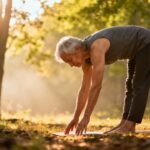Every year, countless seniors experience life-altering falls that rob them of their independence. But what if you could walk with confidence, knowing you’re using techniques that dramatically reduce your risk?
This article reveals six simple walking methods that have helped older adults stay on their feet for years. You don’t need special equipment or intense workouts—just a willingness to tweak how you move.
1. The Power Step Method
Long strides might feel natural, but they shift your center of gravity forward, making it harder to recover if you trip. Instead, take shorter, more deliberate steps.
Each step should land directly under your body. This keeps you balanced and reduces the chance of catching your toe. It might feel slower at first, but you’ll engage more core muscles and build strength over time.
2. The Horizon Gaze
Looking down while walking hunches your shoulders and throws you off balance. Instead, keep your eyes up and gaze toward the horizon.
This straightens your spine and aligns your body. You’ll still see obstacles with your peripheral vision, but you’ll feel taller and more stable. It’s a small change that boosts confidence instantly.
3. The Rolling Thunder Walk
Shuffling or stomping can lead to trips and joint pain. Practice the rolling thunder walk for a smoother, safer stride.
Let your heel touch first, then roll your weight forward to the ball of your foot, and push off gently with your toes. This motion acts like a shock absorber, protecting your knees and hips.
4. The Natural Pendulum Method
Your arms are your body’s built-in balancers. Let them swing naturally in opposition to your legs.
When your right foot steps forward, your left arm should swing forward. This creates a counterbalance that stabilizes your entire body. Keep the movement relaxed from your shoulders.
5. The Smart Support Strategy
If you use a cane or walker, it’s crucial to use it correctly. Hold the cane in the hand opposite your weaker leg to create a tripod of stability.
For walker users, keep it close—don’t push it far ahead. This approach turns mobility aids into tools for confidence, not signs of weakness.
6. The Invisible Training Method
You can build balance without formal exercise. Incorporate these habits into your daily routine:
- Stand on one foot while brushing your teeth.
- Walk heel-to-toe down a hallway.
- Sit and stand without using your hands.
These small practices strengthen your muscles and improve your reaction time, helping you catch yourself if you wobble.
Falling doesn’t have to be a normal part of aging. By integrating these six techniques into your daily walks, you can protect your independence and move with greater assurance.
Start with one change today—whether it’s shortening your stride or lifting your gaze—and feel the difference.
Your body is capable of more than you think, and every intentional step brings you closer to a safer, more confident future.








